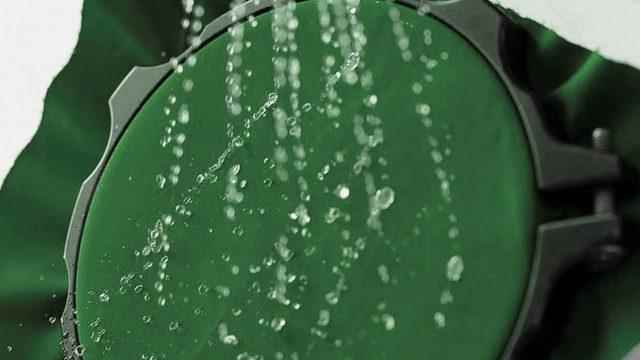A new study has found toxic chemicals called PFAS in the body of otters in England and Wales. So why are these substances, which are widely used in food packaging from non-stick cookware, known as “endless chemicals”?
Perfluoroalkyl and polyfluoroalkyl substances (PFAS) are also found in waterproof clothing, cosmetics, furniture, stain-resistant products, and fire retardants.
It has been scientifically proven that chemicals are linked to pregnancy problems, liver disease, cancer and other diseases.
The concentration of these substances in otters’ bodies is a guide to pollution levels in the environment, the scientists say.
What is PFAS or ‘endless chemicals’?
PFAS, which has been used since the late 1940s and is divided into compounds called perfluoroalkyls and polyfluoroalkyls, has more than 5 thousand varieties in different products. These help the products to be water, oil and stain resistant.
They are known as “eternal chemicals” because they can stay in nature for so long. They poison fish and then move into the bodies of animals and humans.
Substances can leach from products, enter sewers and from there into sewage treatment plants. However, it can leave here untreated and pollute the environment more widely.
PFAS substances found in agricultural lands can be transported from the fields to the rivers along with the sludge. Factories and landfills are other points where chemicals are found and leaked into nature.
PFAS compounds can also enter drinking water directly in these ways. It is in the air and mixes with the blood in the human body.
PFAS found in all deceased otters
Researchers studied 50 otters found dead between 2007 and 2009 and found PFAS in all of them. 80 percent of the animals had at least 12 different types of chemicals in their liver.
A separate observational study, called the Otter Project, found that all animals that died between 2014 and 2019 contained two types of PFAS. Both of these types were currently restricted PFAS types.
Emily O’Rourke, a Cardiff University doctoral student and lead author of the study, told BBC News that otters are a “guard” species, reflecting “widespread pollution” of freshwater in England.
It is not clear whether the concentrations of chemicals found in otters are high enough to harm the animals. Animals were mostly killed in road accidents, so the exact effect of the chemicals on their health is unknown.
O’Rourke notes that the toxic chemicals likely have a “lethal side effect.”
‘It will be in nature for years’
O’Rourke notes that PFASs will be in nature “over the years” and adds:
“When we wash clothes or just wash things in the sink, we send PFASs down the drain. But treatment systems are too old so they can’t clean them. They’re also trapped in sewage sludge.”
O’Rourke says there are more than 5,000 different types of PFAS currently in use. Regulations for endless chemicals have hitherto been made on a species-by-species basis, but O’Rourke believes they should be made in groups.
Denmark has recently banned the use of PFAS in food contact paper, such as fast food packaging.
But worldwide PFAS restrictions are still limited. Last July, the US state of Maine broke new ground by banning the sale of products containing PFAS, effective from 2030. In Maine, PFASs will be available from this date on certain medicinal products for which use is unavoidable.
During the same period, Germany, Denmark, the Netherlands, Norway and Sweden formally submitted requests to restrict PFAS to the European Chemicals Agency (ECHA).
What are the alternatives?
On the manufacturers side, there is a complex picture. While some manufacturers are not even aware that they are using PFAS, it may be easier for others to find alternatives.

For example, some companies in the textile industry are replacing PFAS-containing materials with other materials that are relatively good for human health but still harmful to the planet, such as plastic fiber clothing.
A Swedish company called OrganoClick produces a material called OrganoTex as an alternative to PTFE (Polytetrafluoroethylene), a type of PFAS commonly used in waterproof clothing.
PTFE, better known as Teflon, has been used in many different fields since DuPont patented it in 1941.
Because PTFE is hydrophobic, it repels water in the fabric; It is also used in non-stick coatings, as it is relatively high temperature resistant and quite slippery.
NASA began using PTFE in spacesuits and heat shields in the 1960s.
But OrganoClick’s president and CEO, Mårten Helberg, argues that we don’t really need this chemical to keep coats rainproof.

Unlike astronauts, who need their gear to be water, oil, and other substances resistant, most consumers often “don’t get rained on, just go outside,” as Helberg says.
PTFE is also used in non-stick cookware. Alternatively, cast iron, stainless steel and ceramic non-stick pans are available. They may be more expensive than PFAS-coated pans, but they last longer and are safer, making them a better option.
Many products, such as fire extinguishing foams containing PFAS alternatives, require new usage habits.
“For example, in countries where PFAS-free products are allowed for use at airports, alternative products are purchased and users are satisfied with the performance. London Heathrow airport is an example,” says Shari Franjevic, director of the GreenScreen program, which confirms that the products are free of PFAS and other chemicals.
“Although PFAS-free products perform differently from PFAS-containing products, we understand that in most cases their capacity is sufficient.” says.
Jonatan Kleimark, senior chemicals and business consultant for ChemSec, a Swedish nonprofit that advocates for safer use of chemicals, says that because PFAS varieties are used in so many different ways, there will be a need for multiple alternatives to replace them, and adds:
“We need a lot of research to explore all these different uses.”
